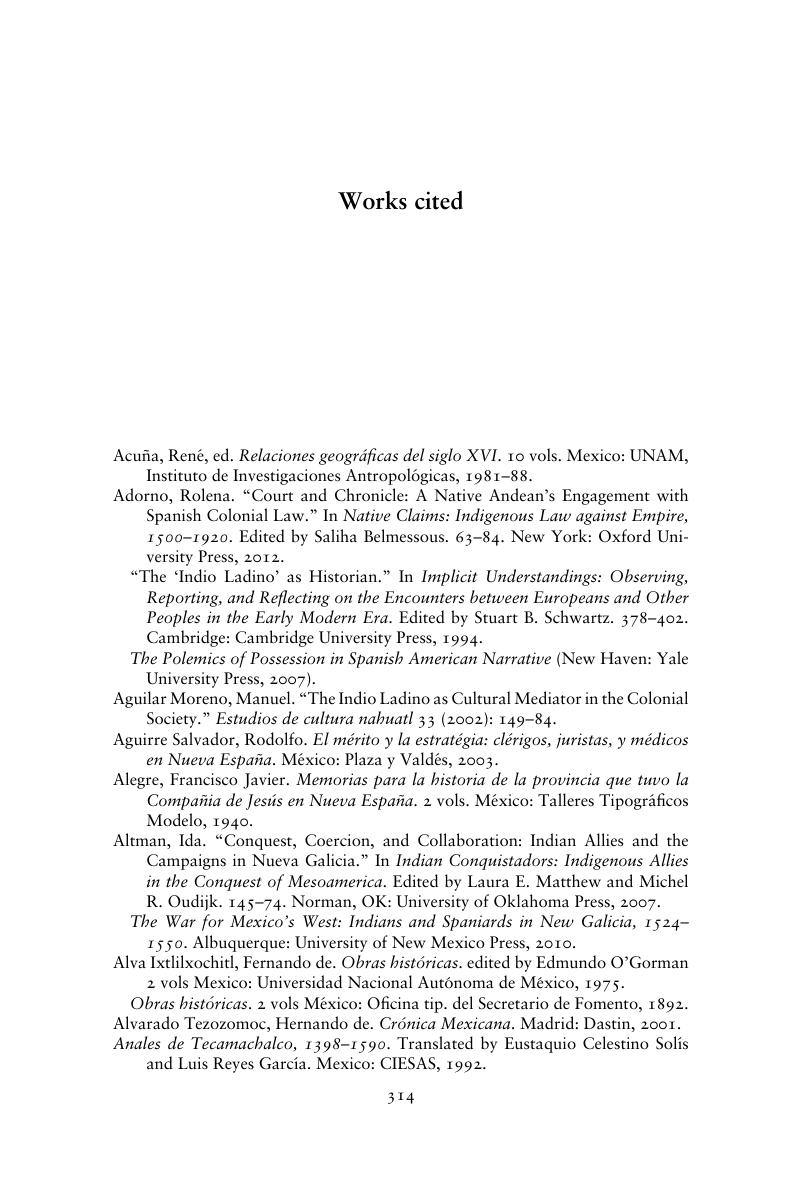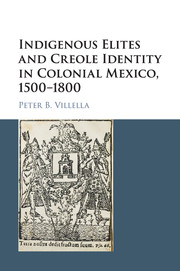Book contents
- Indigenous Elites and Creole Identity in Colonial Mexico, 1500–1800
- Cambridge Latin American Studies
- Indigenous Elites and Creole Identity in Colonial Mexico, 1500–1800
- Copyright page
- Dedication
- Contents
- Figures
- Abbreviations
- Acknowledgments
- Note on language
- 1 Introduction
- 2 The natural lords
- 3 Cacique informants and early Spanish texts, 1535–80
- 4 Cacique-chroniclers and the origins of creole historiography, 1580–1640
- 5 Cacique-hidalgos
- 6 Cacique-patrons
- 7 Cacique-letrados
- 8 Cacique-ambassadors and the “Indian nation” in Bourbon Mexico
- 9 Conclusion
- Works cited
- Index
- Other books in the series
- References
Works cited
Published online by Cambridge University Press: 05 January 2016
- Indigenous Elites and Creole Identity in Colonial Mexico, 1500–1800
- Cambridge Latin American Studies
- Indigenous Elites and Creole Identity in Colonial Mexico, 1500–1800
- Copyright page
- Dedication
- Contents
- Figures
- Abbreviations
- Acknowledgments
- Note on language
- 1 Introduction
- 2 The natural lords
- 3 Cacique informants and early Spanish texts, 1535–80
- 4 Cacique-chroniclers and the origins of creole historiography, 1580–1640
- 5 Cacique-hidalgos
- 6 Cacique-patrons
- 7 Cacique-letrados
- 8 Cacique-ambassadors and the “Indian nation” in Bourbon Mexico
- 9 Conclusion
- Works cited
- Index
- Other books in the series
- References
Summary

- Type
- Chapter
- Information
- Publisher: Cambridge University PressPrint publication year: 2016



